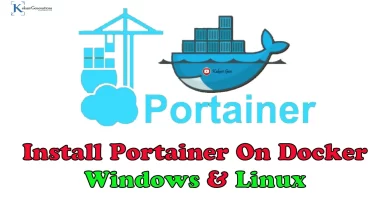Cara Install Screen di Centos 8 + Video
Kali ini kita akan belajara cara install screen di centos 8. screen ini umumnya digunakan oleh sysadmin dalam bekerja karena sangat menolong atau memudahkan sysadmin
Apa itu Linux Screen?
Linux Screen atau screen adalah aplikasi terminal yang dikembangkan oleh GNU project. Terkadang di dokumentasi resmi disebut GNU Screen. Screen memiliki tujuan yang jelas yaitu terminal multiplexing.
Dengan kata lain, screen membagi terminal fisik ke dalam beberapa sesi virtual, kemudian berhenti dan meringkas aktivitas sesi virtual tersebut.
Cara Install screen di centos 8
okaay sobat kekasi kita mulai tutorial ini. pertama sobat kekasi masuk terminal linux dulu. jika sudah ketikan perintah yum install screen
[root@localhost ~]# yum install screen
Jika sobat kekasi menemukan pesan error seperti dibawah ini, tidak perlu khawatir.
[root@localhost ~]# yum install screen
Last metadata expiration check: 18:13:55 ago on Sat 20 Mar 2021 08:42:01 PM WIB.
No match for argument: screen
Error: Unable to find a match: screen
ketikan perintah yum install epel-release, untuk mengatasi masalah diatas tersebut.
[root@localhost ~]# yum install epel-release
Setelah instalasi epel-release sudah selesai. sobat kekasi coba kembali untuk install screen dengan perintah yum install screen. pasti tidak akan ada pesan error seperti sebelumnya. ^_^
[root@localhost ~]# yum install screenUntuk mengecek versi screen yang terinstall sobat kekasi bisa ketikan perintah screen -v.
[root@localhost ~]# screen -v
Screen version 4.06.02 (GNU) 23-Oct-17
Untuk perintah-perintah lainnya yang di dapat kita gunakan di screen, sobat kekasi ketikan perintah screen -help.
[root@localhost ~]# screen -help
Use: screen [-opts] [cmd [args]]
or: screen -r [host.tty]
Options:
-4 Resolve hostnames only to IPv4 addresses.
-6 Resolve hostnames only to IPv6 addresses.
-a Force all capabilities into each window's termcap.
-A -[r|R] Adapt all windows to the new display width & height.
-c file Read configuration file instead of '.screenrc'.
-d (-r) Detach the elsewhere running screen (and reattach here).
-dmS name Start as daemon: Screen session in detached mode.
-D (-r) Detach and logout remote (and reattach here).
-D -RR Do whatever is needed to get a screen session.
-e xy Change command characters.
-f Flow control on, -fn = off, -fa = auto.
-h lines Set the size of the scrollback history buffer.
-i Interrupt output sooner when flow control is on.
-l Login mode on (update /var/run/utmp), -ln = off.
-ls [match] or
-list Do nothing, just list our SockDir [on possible matches].
-L Turn on output logging.
-Logfile file Set logfile name.
-m ignore $STY variable, do create a new screen session.
-O Choose optimal output rather than exact vt100 emulation.
-p window Preselect the named window if it exists.
-q Quiet startup. Exits with non-zero return code if unsuccessful.
-Q Commands will send the response to the stdout of the querying process.
-r [session] Reattach to a detached screen process.
-R Reattach if possible, otherwise start a new session.
-s shell Shell to execute rather than $SHELL.
-S sockname Name this session <pid>.sockname instead of <pid>.<tty>.<host>.
-t title Set title. (window's name).
-T term Use term as $TERM for windows, rather than "screen".
-U Tell screen to use UTF-8 encoding.
-v Print "Screen version 4.06.02 (GNU) 23-Oct-17".
-wipe [match] Do nothing, just clean up SockDir [on possible matches].
-x Attach to a not detached screen. (Multi display mode).
-X Execute <cmd> as a screen command in the specified session.



